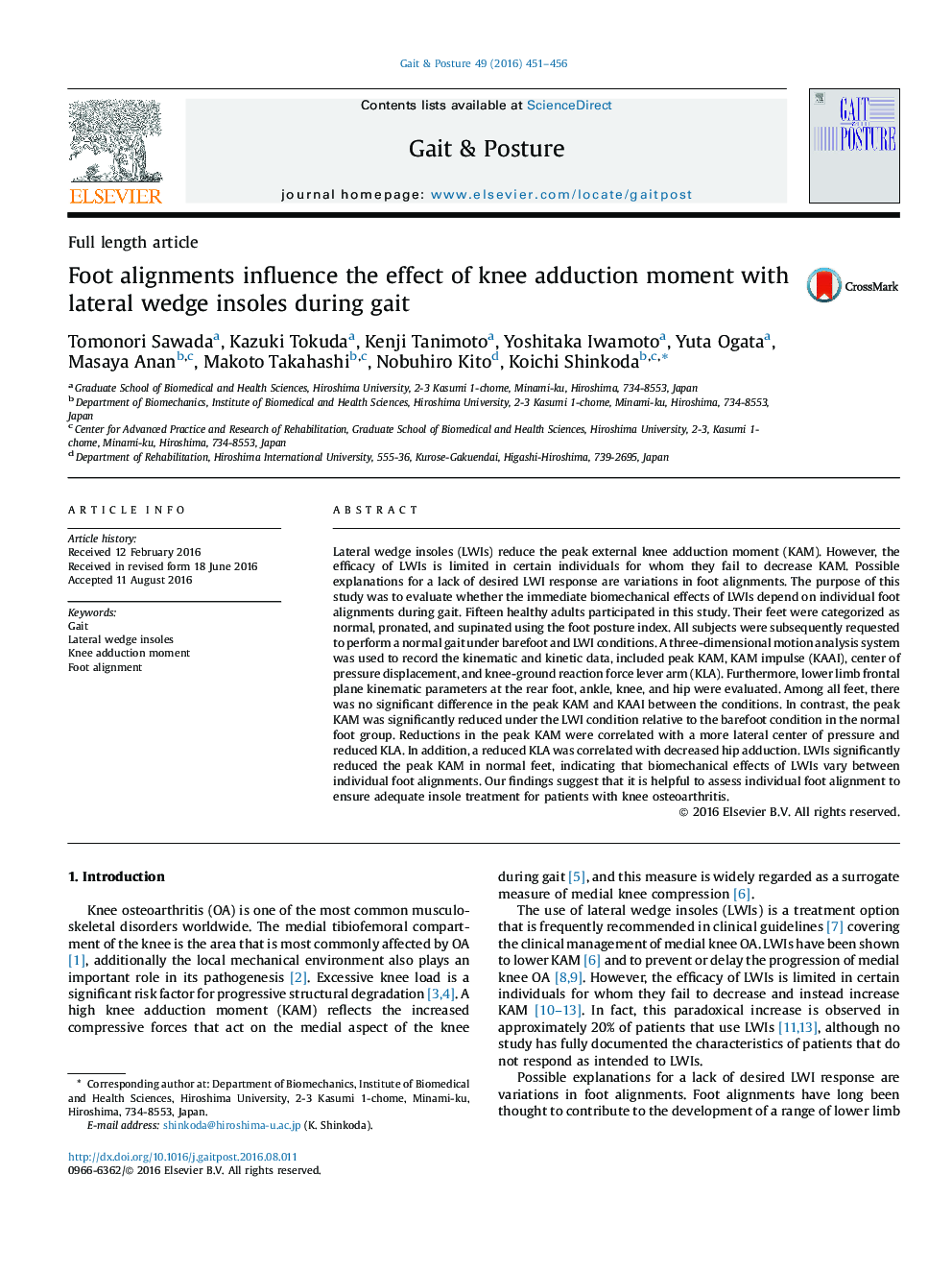| کد مقاله | کد نشریه | سال انتشار | مقاله انگلیسی | نسخه تمام متن |
|---|---|---|---|---|
| 6205521 | 1603846 | 2016 | 6 صفحه PDF | دانلود رایگان |
- We evaluate the immediate biomechanical effects of lateral wedge insoles during gait.
- Lateral wedge insoles have a positive effect in the Normal foot group.
- Reduction in the peak knee adduction moment was correlated with reduced lever arm.
- The reduced lever arm was correlated with less hip adduction during gait.
- The biomechanical effects vary according to the individual's foot alignment.
Lateral wedge insoles (LWIs) reduce the peak external knee adduction moment (KAM). However, the efficacy of LWIs is limited in certain individuals for whom they fail to decrease KAM. Possible explanations for a lack of desired LWI response are variations in foot alignments. The purpose of this study was to evaluate whether the immediate biomechanical effects of LWIs depend on individual foot alignments during gait. Fifteen healthy adults participated in this study. Their feet were categorized as normal, pronated, and supinated using the foot posture index. All subjects were subsequently requested to perform a normal gait under barefoot and LWI conditions. A three-dimensional motion analysis system was used to record the kinematic and kinetic data, included peak KAM, KAM impulse (KAAI), center of pressure displacement, and knee-ground reaction force lever arm (KLA). Furthermore, lower limb frontal plane kinematic parameters at the rear foot, ankle, knee, and hip were evaluated. Among all feet, there was no significant difference in the peak KAM and KAAI between the conditions. In contrast, the peak KAM was significantly reduced under the LWI condition relative to the barefoot condition in the normal foot group. Reductions in the peak KAM were correlated with a more lateral center of pressure and reduced KLA. In addition, a reduced KLA was correlated with decreased hip adduction. LWIs significantly reduced the peak KAM in normal feet, indicating that biomechanical effects of LWIs vary between individual foot alignments. Our findings suggest that it is helpful to assess individual foot alignment to ensure adequate insole treatment for patients with knee osteoarthritis.
Journal: Gait & Posture - Volume 49, September 2016, Pages 451-456
